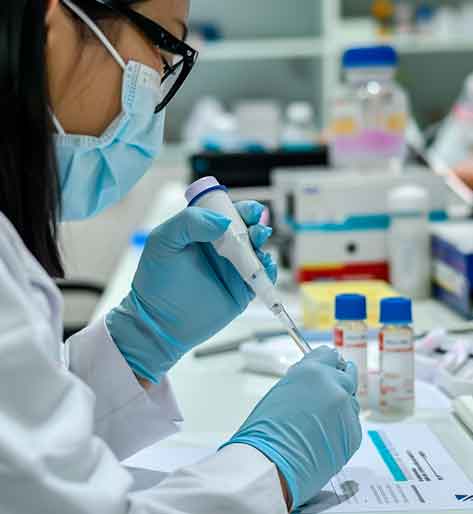
Chemistry laboratory equipment is vital for conducting experiments and ensuring precise results. Whether you’re a beginner or an experienced chemist, it’s important to understand the different types of lab tools and their uses. In this guide, we’ll cover the most common chemistry lab equipment, their applications, and how to choose the right tools for your experiments. Additionally, we’ll explore the role of advanced medical devices like the CBC machine, which is crucial in clinical labs for analyzing blood samples.
Quick Takeaways
- Bunsen burners provide controlled heating for a variety of experiments.
- Glassware such as beakers, flasks, and pipettes are essential for measuring, mixing, and heating chemicals.
- Centrifuges are used to separate particles in liquid samples through centrifugal force.
- Microscopes allow chemists to examine small particles like cells and crystals in detail.
- pH strips help measure the acidity or alkalinity of different solutions.
- Specialized medical equipment like the CBC machine plays a key role in blood analysis in medical laboratories.
1. Bunsen Burners: Essential for Controlled Heating in Chemistry Labs
The Bunsen burner is a crucial tool found in almost every chemistry lab. It features a gas valve and an adjustable air regulator, allowing you to control the flame for precise heating. This equipment is commonly used for:
- Heating chemicals in beakers.
- Sterilizing lab equipment.
- Creating a stable, high-temperature surface for chemical reactions.
Whether you’re conducting basic chemical reactions or sterilizing instruments, the Bunsen burner is indispensable for any chemist.
2. Common Types of Lab Glassware and Their Functions
Laboratory glassware is designed for specific tasks such as mixing, heating, or storing chemicals. Here are the most common types:
- Beakers: Used for mixing and measuring liquids in small or large volumes.
- Flasks: Ideal for heating or storing substances, with varieties like Erlenmeyer and volumetric flasks.
- Pipettes: Precision tools for transferring small amounts of liquid between containers.
- Test Tubes: Used for holding small samples, especially during chemical reactions or testing.
Selecting the correct type of glassware is critical to ensuring both the safety and success of your experiment.
3. Centrifuges: Separating Particles Through Centrifugal Force
A centrifuge is an essential tool used in laboratories to separate particles in a liquid sample based on density. The centrifuge works by spinning the sample at high speeds, generating centrifugal force that pushes heavier particles to the bottom of the tube and lighter particles to the top.
Common uses of centrifuges include:
- Separating blood cells from plasma.
- Isolating DNA from other cell components.
- Separating particles in various chemical mixtures.
In medical laboratories, equipment like the CBC machine is frequently used to analyze blood samples, providing critical data for diagnosing health conditions.
4. Microscopes in Chemistry Labs: How to Use Them
Microscopes are vital for examining tiny particles, allowing chemists to observe substances at a cellular or molecular level. Microscopes are commonly used to study:
- Cell structures.
- Bacterial cultures.
- Crystals and small particles.
To use a microscope, place the sample on a slide, insert it into the microscope, and adjust the lens for a clear view. This tool provides chemists with valuable insights into the composition and structure of materials.
5. Using pH Strips to Test Acidity and Alkalinity
pH strips are simple yet effective tools for measuring the acidity or alkalinity of solutions. Here’s how they work:
- Dip the strip into the solution.
- Match the resulting color to a reference chart that indicates the pH level.
Testing the pH of a substance is crucial in a wide range of fields, from environmental science to food and beverage industries. Acidic solutions with low pH can be harmful, while highly alkaline solutions can damage certain materials. By using pH strips, chemists can ensure the safety and compatibility of substances they work with.
6. Key Equipment for Organic Chemistry Labs
In organic chemistry labs, several tools are essential for conducting research and experiments:
- Bunsen burners: For heating chemicals to initiate or speed up reactions.
- Test tubes: To hold small samples of substances.
- Pipettes: For transferring precise volumes of liquid.
Additionally, specialized equipment like the CBC machine is critical in medical laboratories, especially for analyzing blood samples. The CBC machine plays a crucial role in measuring different components of blood, aiding in accurate diagnostics and treatment planning.
Conclusion
Chemistry labs rely on a variety of specialized equipment, from Bunsen burners and glassware to more advanced tools like centrifuges and microscopes. Understanding how to properly use each piece of equipment ensures accurate and safe experimentation. Additionally, medical laboratories benefit from cutting-edge technology like the CBC machine, which is essential for performing blood tests and delivering precise diagnostic results.
By selecting the right tools for the job and knowing how to use them effectively, chemists can ensure the success of their experiments and contribute to groundbreaking research.